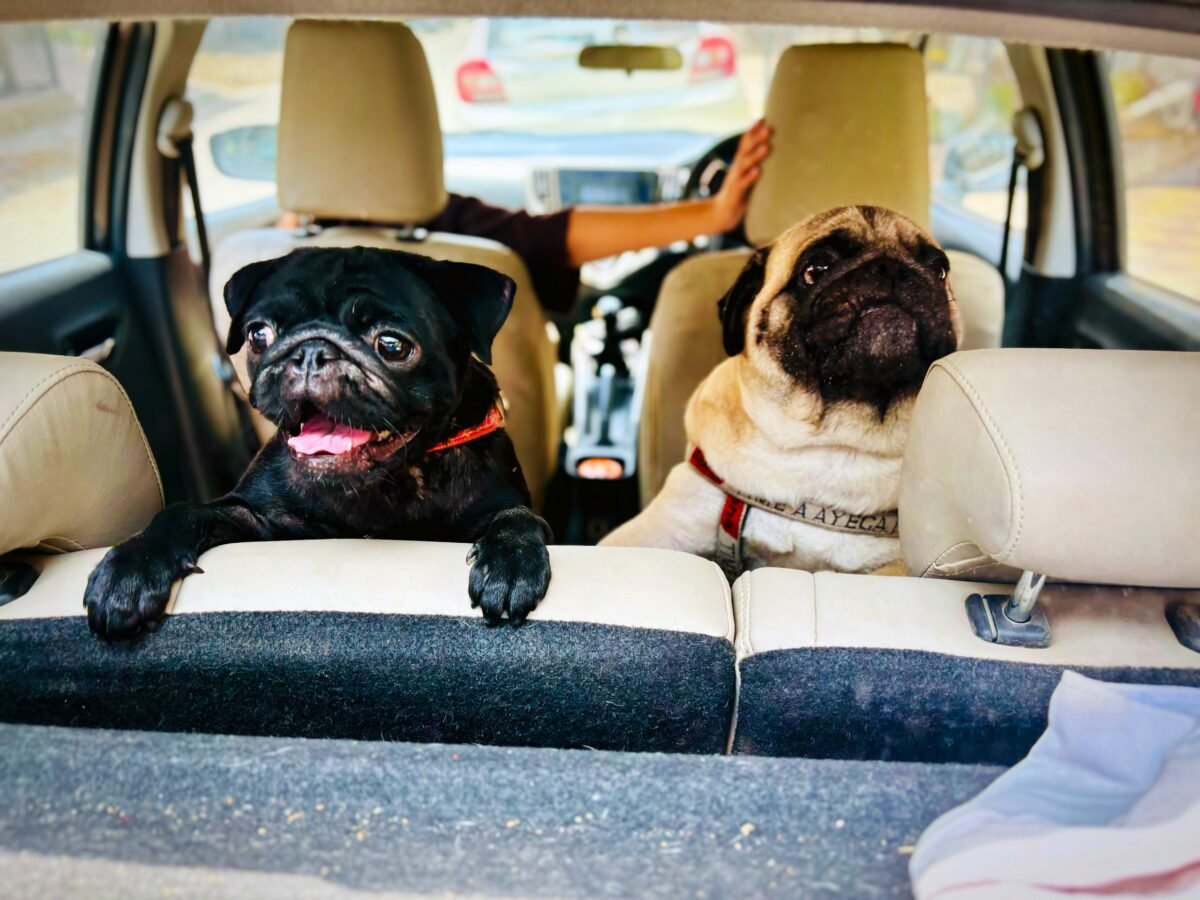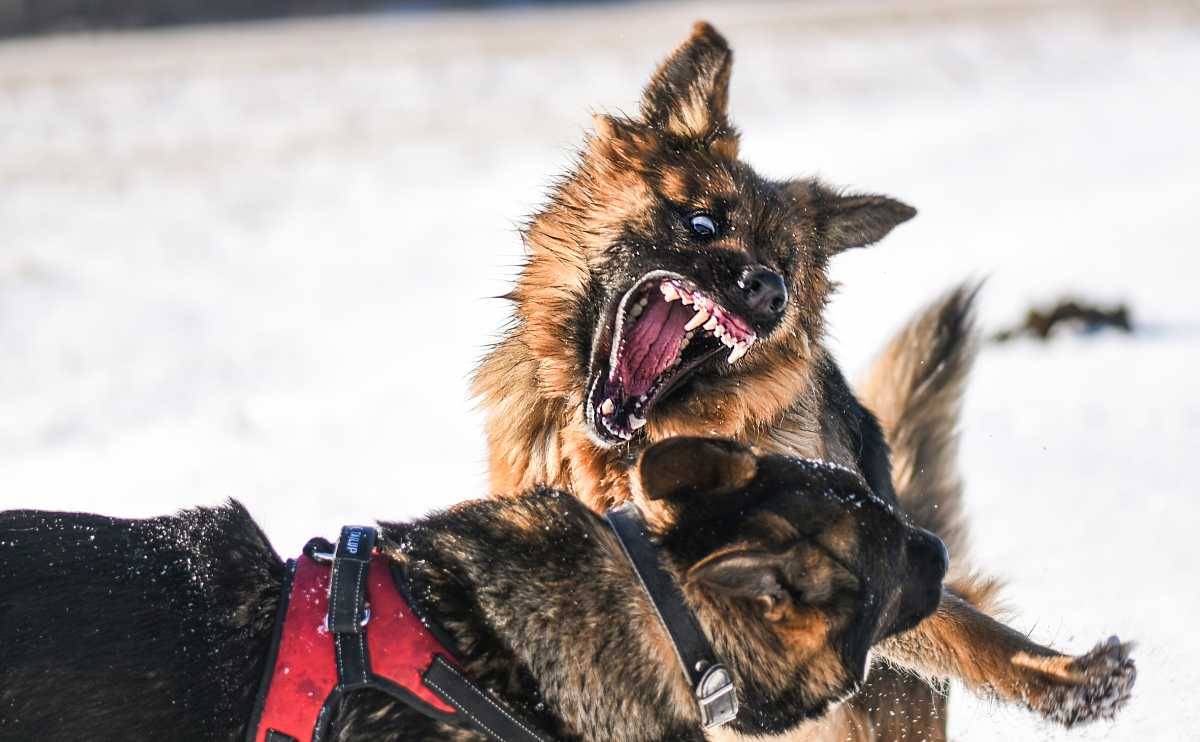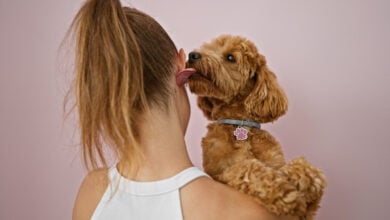Why Do Dogs Like Sticking Their Heads Out The Car Window?
When you purchase through links on our site, we may earn a commission. Here’s how it works.
Ah, the open road — sun shining, tunes bumping, and that unmistakable image of pure canine joy: a dog’s head out the window, ears flapping like a pair of furry flags. It’s one of the most universal dog moments there is. But why do our pups do this? Are they chasing smells, sensations, or just living their best “wind in the fur” fantasy?
Table of Contents
Behind that blissed-out expression is some serious science. The open window is like a sensory amusement park — a rush of smells, sounds, and movement that humans can’t begin to experience the same way. So buckle up, because we’re diving nose-first into what makes this simple act so irresistible, and why it’s not always as safe as it looks.
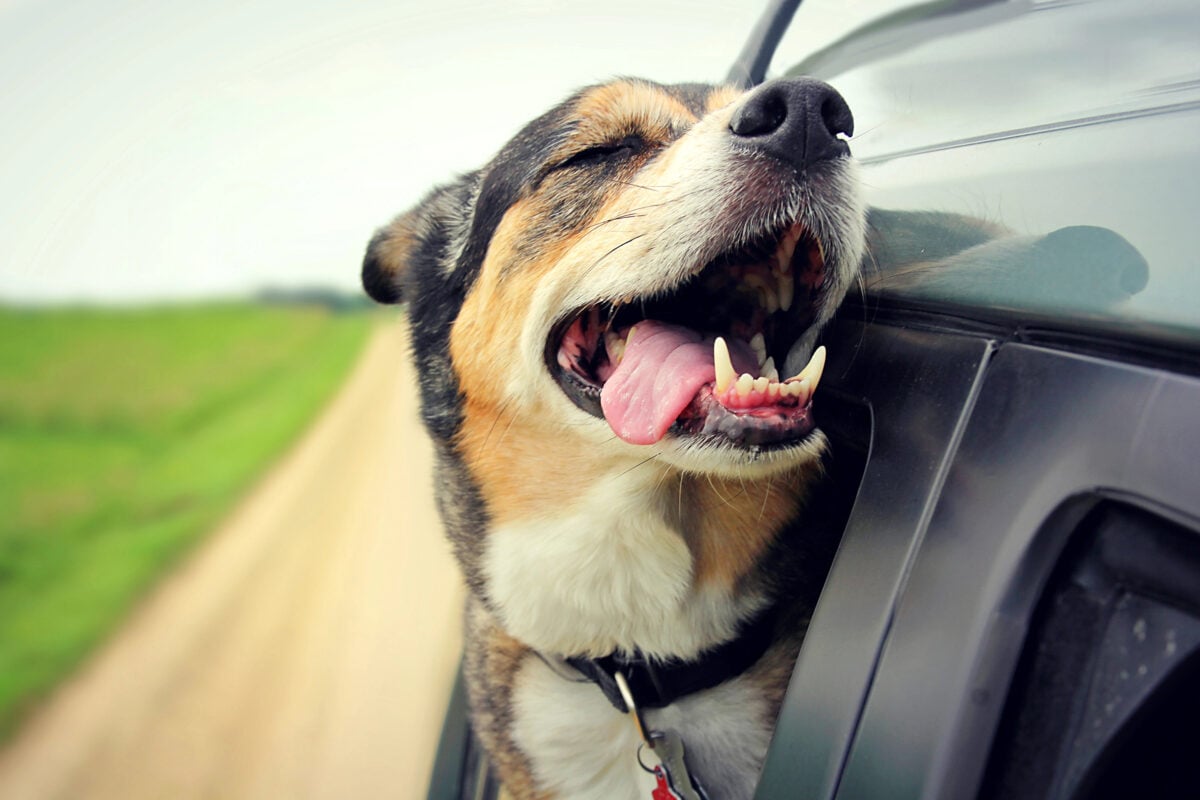
Why Do Dogs Like Sticking Their Heads Out The Window?
Picture This: You crack the window two inches, and suddenly your dog transforms into a wind-powered satellite dish — nose twitching, eyes wide, whole body vibrating like they just discovered the meaning of life. If you’ve ever witnessed this moment, you know precisely how powerful (and adorable) the window effect can be.
Let’s break down the five biggest reasons dogs love hanging out the window and what’s actually happening inside that brilliant little canine brain.
1. The Pure Joy of the Breeze (Freedom + Wind Rush)
If there’s one universal canine truth, it’s this: dogs LOVE a good breeze. Whether it’s a cracked window or a full-on wind tunnel, that rush of air delivers an instant, undeniable hit of joy.
When the wind hits their face, dogs enter a state of complete sensory celebration. Airflow stimulates nerves around their muzzle and whiskers, the world suddenly smells richer and more complex, and everything feels exciting and alive. It’s like their version of a natural high created by nothing more than fresh air and forward motion.
And that wind isn’t just refreshing — it represents freedom. Even if they’re buckled in the back seat, leaning into a breeze gives dogs a feeling of being out in the world, exploring, gathering information, and experiencing everything at once.
It triggers a release of dopamine and endorphins, which explains that unmistakable “this is the best moment of my life” expression.
Real-Life Car Ride Moment
My dog, Rio, loves car rides, and, of course, his favorite thing to do is stick his head out the window. Every time I glance back and see his blissed-out face, I imagine “Free Fallin’” by Tom Petty playing in the background — his personal anthem for the open road.
– Tara Maurer, Rio’s Chauffeur & Writer For Canine Journal
For many dogs, a gentle breeze through a window is the perfect blend of thrill, comfort, sensory stimulation, and exploration. It’s simple, it’s safe (with important limits), and it’s one of the purest joys in their daily lives.

And the sensory adventure is just getting started…
2. The Ultimate Scent Rush
If humans travel for the view, dogs travel for the smells. When your dog sticks their head out, they’re tapping into a sensory superpower — a buffet of aromas so rich and detailed it would knock us off our seats.
Here’s how wild it gets: dogs have around 300 million scent receptors (we have a measly six million), and the part of their brain dedicated to scent analysis is 40 times larger than ours. Their noses are basically supercomputers, and a moving car turns the world into one massive conveyor belt of scent information.
Even more amazing, when dogs exhale, the air exits through special side slits in their nose, creating little air currents that pull new smells right back in. This allows dogs to sniff continuously, decoding every field, passing car, and burger joint along the way.
If smells are a big deal, wait until you see how dogs interpret motion.
Did you know?
Dogs can even smell emotions, thanks to a specialized organ called the Jacobson’s organ that processes pheromones, giving them the ability to decipher the emotions of other dogs and humans.
3. “Fast & Fur-ious:” Visual Thrills for Dogs
Even though dogs don’t see color the way we do (their world is mostly shades of blue and yellow), they’re absolute pros at detecting motion. Their eyes pick up more frames per second than ours, which means fast-moving scenery looks sharp and detailed instead of blurry. Think of it like upgrading from regular TV to IMAX — everything is bigger, faster, and more engaging.
And because movement activates their predatory instincts, it’s mentally stimulating, too. Watching squirrels dart, birds swoop, and landscapes blur by keeps their minds sharp and alert, even if they’re just drooling out the window.
Dogs also have a much wider field of vision (250 degrees compared to our 180), making the passing landscape feel more panoramic. So when your pup leans out the window, they’re scanning an ever-changing, high-definition world full of potential excitement.

Every flicker of sunlight, every bird, every shadow, every passing cyclist becomes part of a moving puzzle. Check out our article on how dogs see the world to learn more.
What Dogs Notice From the Window
- Fast-moving shadows
- Other dogs (priority #1)
- People eating food
- Birds they are 100% convinced they can catch
- Cyclists and joggers
- Suspicious mail trucks
- New smells they MUST investigate
But it’s not just about smells and sights — it’s about comfort too.
4. Cooling Off: DIY Canine Air Conditioning
Dogs regulate body temperature primarily through panting, and the car window breeze helps accelerate that cooling process. For many dogs, the airflow is refreshing, relaxing, and physically soothing, especially after exercise or on warm days.
That wind also triggers facial nerves, creating a calming effect similar to a fan blowing on your face in summer.
However, dogs can’t always tell when they’ve had too much wind exposure — prolonged exposure can dry their eyes or irritate their ears (we’ll address safety soon).
For your dog, though, that cool blast feels like pure relief, especially after a walk, a trip to the park, or an overly dramatic zoomie episode.
Beyond all the sensory excitement, there’s something even more meaningful happening…
5. Feeling Included: The Backseat VIP Experience
For dogs, car rides are quality time together. When your pup sticks their head out the window, they’re making sure they’re part of whatever adventure you’re on.
That sense of inclusion is deeply emotional. Behaviorists note that dogs experience “social referencing,” meaning they look to us for cues on how to behave and feel in new situations. When you roll down the window and they sense your excitement (or even just your calm), they’re picking up on that vibe and joining in.
For many dogs, sticking their head out the window provides:
- Reassurance (they know where they are and where they’re going)
- Comfort (being close to you + sensory stimulation = happy dog)
- Confidence (especially for anxious or uncertain pups)
And yes, some dogs simply love the thrill of being “co-pilot,” even if they never actually help with directions.
One Window-Loving Dog
My black Lab, Bear, always had a mellow, old-soul calm about him, the kind of dog who treated every car ride like a tiny spiritual journey. The moment we started moving, he’d rise up behind the back seat, plant his paws, and gently ease his head toward the open window.
When the wind finally hit him, his ears flopped back, his eyes softened, and a peaceful Lab smile spread across his face, making him look as though he was breathing in the whole universe.
People in other cars always felt it too. Kids waved, adults softened, and even the crankiest drivers couldn’t help but smile back at him.
Bear wasn’t trying to perform or charm anyone; he was just quietly sharing his joy with the world, letting the sunshine and breeze make every mile feel a little lighter.
And every time he lifted his face to the wind, he reminded me to loosen my grip a little and enjoy the ride right along with him.
– Danielle DeGroot, Rescue Dog Mom & Canine Journal Writer
Taking A Car Ride To The Extreme
Zoomies, plus head out the window. Need we say more?
Why Do Some Dogs Not Dig Hanging Their Heads Out The Window?
For every dog who goes full “wind-in-my-fur enlightenment mode,” there’s another who sits politely in the back seat like they’re waiting for an Uber ride to be over. And that’s totally normal.
Not every pup is a window enthusiast, and there are several reasons why your dog might prefer the A/C and a comfy seat over a faceful of breeze.
1. Personality Plays A Big Role
Just like people, dogs have preferences. Some are thrill-seekers; some are homebodies; and some are simply not interested in the wind trying to peel their eyelids back.
Shy, cautious, or introverted dogs may feel overwhelmed by the noise, motion, and sensory overload that comes with an open window.
2. Car Anxiety Takes Over
If your dog is already nervous in the car, sticking their head out may actually make things worse. Dogs with car anxiety are often trying to minimize stimulation, not increase it.
Common signs of car stress include:
- Car sickness
- Whining or crying
- Excessive drooling
- Shaking or trembling
- Panting heavily
- Trying to hide or curl up
These pups may prefer staying close to you or keeping the environment as calm and predictable as possible.
3. Age Can Make A Difference
Puppies treat everything like an adventure, including wind hitting them at 30 mph. Senior dogs, on the other hand, often choose comfort over chaos. They may find the wind, noise, or motion irritating instead of exciting.
4. Physical Sensitivities
Dogs with dry eyes, allergies, ear infections, or skin sensitivities may avoid sticking their head out the window because it simply doesn’t feel good.
If your dog squints, paws at their face, or shakes their head after even a brief window time, they may be signaling discomfort, irritation, or pain.
Myth vs. Reality: Dogs Instinctively Know Not to Jump Out of Cars
Myth: Dogs understand the dangers of traffic and height.
Reality: Instinct overrides training in seconds. A squirrel, a cyclist, or a loud noise can cause even the calmest dog to lunge or fall.
This is why restraints and window limits are essential — not optional.
What Are The Risks? (Why That Windy Joyride Isn’t Always Safe)
As much as your dog looks like they’re having a spiritual awakening out that window, it’s not without danger. What feels like freedom to them can turn risky faster than you can say “squirrel!”
Here’s what veterinarians (and plenty of emergency clinics) see most often:
1. Flying Debris & Eye Injuries
This is the number one risk, and it’s a significant one. When your dog’s head is exposed, they’re vulnerable to:
- Dust and dirt
- Bugs
- Little rocks and pebbles kicked up by tires
- Pollen and allergens
- Road grit and sand
The American Veterinary Medical Association (AVMA) warns that these can cause corneal scratches, tears, infections, or ulcers, all of which are painful and require veterinary care. And unlike us, dogs don’t blink as often, making their eyes even more vulnerable.
2. Ear Damage & Dryness
That same wind whipping through their ears may feel great in the moment, but chronic exposure can cause:
- Ear hematomas
- Dryness and inflammation
- Aggravation of existing allergies
- Debris getting lodged inside the ear canal
- Increased risk of yeast or bacterial infection
Continuous airflow dries out the ear canal and stirs up dust and allergens. If your pup shakes their head or scratches more than usual after rides, it’s time for a vet check.
Dogs with long, floppy ears (Cocker Spaniels, Basset Hounds, Goldendoodles, etc.) are especially at risk.
3. Unexpected Jumps Or Falls
Even the most well-trained dog can act on instinct. The ASPCA notes that dogs may:
- Jump at another dog
- Lunge at wildlife
- React to a loud noise
- Try to hop out when excited
A startled dog can fall or leap unexpectedly, and the outcome can be catastrophic. Training does not override instinct. This is why restraints matter.
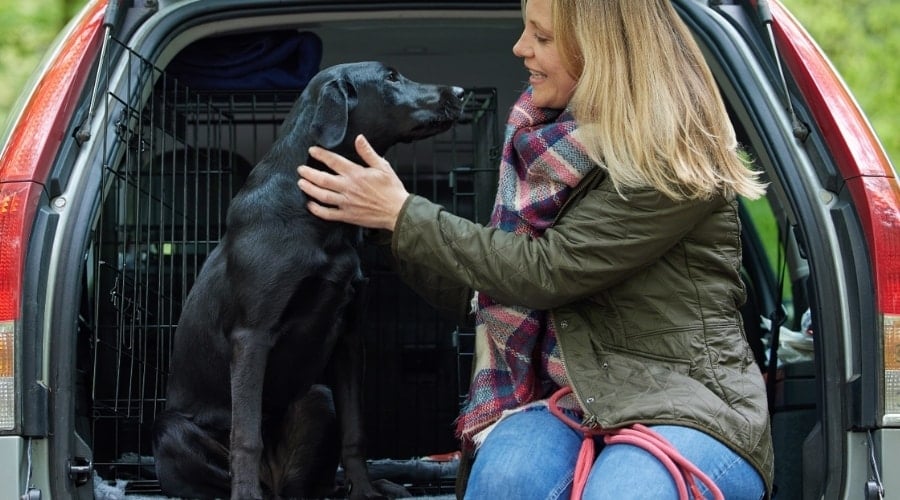
4. Driver Distraction
A flapping, excited co-pilot can block mirrors, lean into the driver, or hit window buttons. In many states, driving with an unrestrained dog is actually considered a safety violation. If your pup’s enthusiasm causes you to take your eyes off the road, you both become less safe.
Quick tip: If your dog insists on feeling the breeze, crack the window only a few inches — enough for airflow, not escape room.
Car Safety For Dogs (How to Keep the Fun Without the Harm)
The good news? You can let your pup enjoy car trips safely without killing the vibe. Veterinarians, the AVMA, ASPCA, and the Center for Pet Safety all recommend the following:
1. Use A Crash-Tested Harness Or Crate
According to the Center for Pet Safety crash testing, the safest setups are seat-belt harnesses for medium to large dogs and secured crates for smaller ones. A proper restraint:
- Keeps drivers focused
- Prevents jumping or falling
- Reduces serious injuries in accidents
The ideal spot is the back seat or cargo area — never the front passenger seat, where airbags can cause injury. See our top picks for the best seat belts, harnesses, and car seats for dogs. We also review the best dog crates for cars.

2. Crack the Window — Don’t Roll It Down Fully
Dogs can still enjoy airflow without being exposed. A 2 to 3 inch crack:
- Allows plenty of scent and breeze
- Prevents full head extension
- Stops dogs from pushing their weight onto the glass
- Reduces debris exposure
3. Keep Windows Locked
Dogs have mastered the art of “accidental paw button presses.” Always child-lock your windows so your dog can’t roll them down further or pop them open mid-ride.
4. Bring Familiar Comforts
If your dog gets anxious, bring a favorite blanket, toy, or bed for scent reassurance. Some dogs relax when surrounded by familiar smells; others benefit from calming supplements or vet-prescribed anxiety medication for long drives.
5. Try Vent Therapy
If your pup can’t stick their nose out safely, park them in front of an air-conditioning vent. Many dogs love the sensation just as much as the wind, minus the risk of debris. It’s basically window time, climate-controlled.
6. Pull Over For Sniff Breaks On Longer Drives
Let them enjoy what they’re craving — the smells of the world — in a safe, parked environment. A few minutes to explore the grass or stretch those legs can reduce restlessness and make the rest of the ride calmer.
Quick Safety Checklist
Before every ride:
- Crash-tested harness or crate? Check.
- Window cracked only a few inches? Check.
- Window locks on? Check.
- Comfort item for anxious pups? Check.
- Dog in the back seat? Check.
- Never allow your dog in the front seat with an airbag.
Frequently Asked Questions
Still curious about how car rides affect your dog? These quick FAQs clear up the most common questions dog parents ask. Have more questions? Drop them in the comments — we answer!
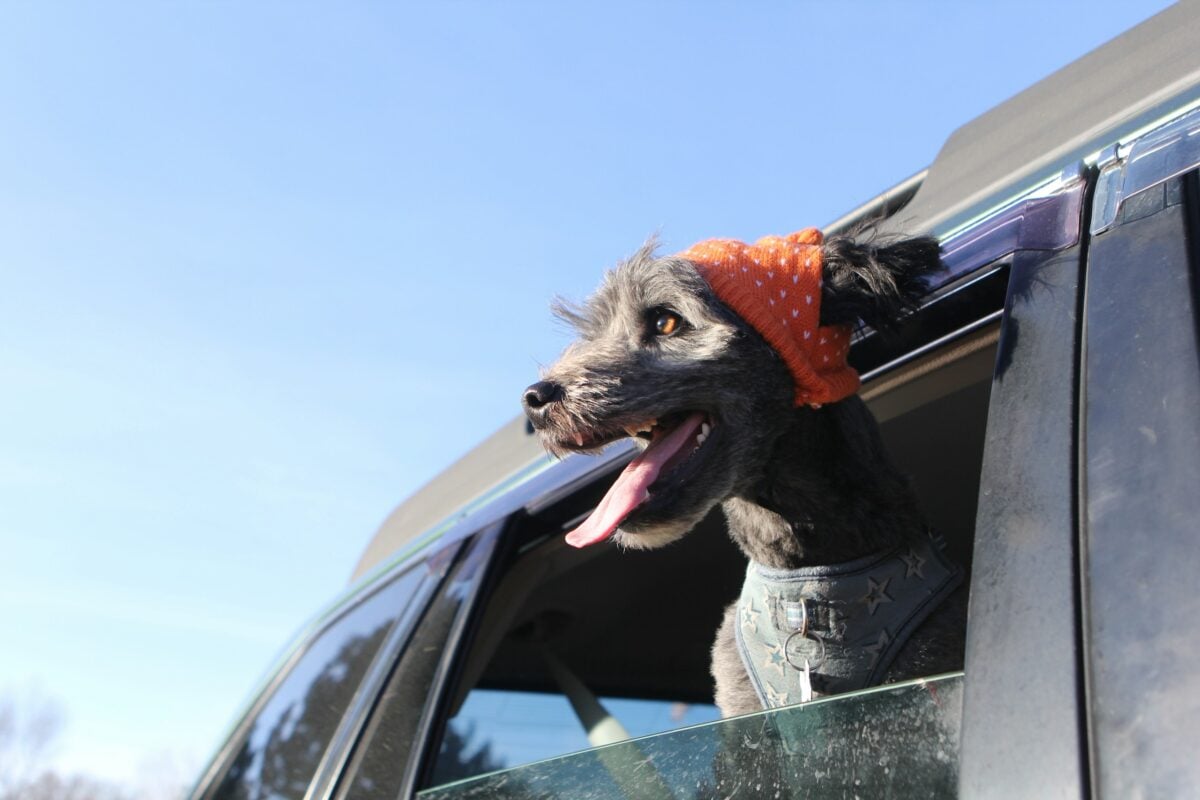
Is It Safe For My Dog To Stick Their Head Out The Window?
Technically? No.
Emotionally? Your dog will say yes every single time.
Veterinarians across the AVMA, ASPCA, and Center for Pet Safety agree that dogs should not hang their heads out of moving car windows. The risk of eye injuries, ear irritation, debris impact, and falls is significant, even for well-trained dogs.
If your pup loves the breeze, crack the window just enough for airflow but not enough for escape. A seat-belt harness or crash-tested car restraint is the safest setup.
Can A Dog Head Out The Window Cause Ear Infections?
Unfortunately, yes, especially if your dog has floppy ears or sensitive skin. Fast-moving air dries out the ear canal, kicks up dirt, and can introduce irritants. Combined with moisture from panting, it creates the perfect environment for yeast or bacteria.
Watch for:
- Head shaking
- Scratching
- Odor
- Redness inside the ear
If you spot any of those, it’s time for a vet check.
Can My Dog Get Motion Sickness From Sticking Their Head Out The Window?
Absolutely. Some dogs feel better with fresh air. Others feel worse because the sensory overload (fast-moving environment, intense smells, rapid motion) can trigger nausea.
If your dog drools excessively, pants, whines, or seems restless, close the window and pull into the “calm zone”: shade, AC, and a quick break. If your pup gets carsick easily, check out our guide to managing motion sickness in dogs.
Why Do Some Dogs Hate Sticking Their Heads Out the Window?
Just like people, some dogs are thrill-seekers… and others are more “cozy reading nook with a latte.”
Dogs who dislike the open window may feel:
- Overstimulated (too many smells, too fast)
- Anxious (cars = stress triggers)
- Cold or uncomfortable
- Unsure of the motion
Age plays a role, too. Puppies treat car rides like Disneyland. Senior pups often prefer the peace and quiet of a climate-controlled nap.
Other Funny Dog Behavior
Dogs are natural comedians, often unintentionally. If you love decoding the quirks that make them so lovable, here are some next reads that pair perfectly with this topic:
- Why Do Dogs Get the Zoomies?
- Why Do Dogs Stare at Us?
- Why Do Dogs Tilt Their Heads?
- Why Dogs Love Tennis Balls
These all make great follow-ups for the dopamine lovers in your life (you and your dog).
Is your dog Team Window, Team A/C Vent, or Team “Absolutely Not” when it comes to car rides? We’d love to hear your funniest (or weirdest) car-ride stories in our comments.
